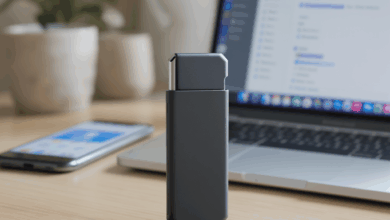Master Cryptocurrency Security in 7 Practical Steps You Can Follow Today

Why does securing cryptocurrency feel like trying to hold water in your hands? I remember the first time I heard about someone losing their crypto fortune—not to hackers breaking through firewalls, but to a simple phishing scam that looked unnervingly real. It made me wonder: how can ordinary users, without cybersecurity degrees, possibly keep up with these increasingly sophisticated attacks?
These days, cyber threats are evolving faster than ever. Imagine AI-crafted phishing emails so convincing they could fool even the most cautious. Or consider smart contracts—once hailed as the future of trustless transactions—now being probed relentlessly by AI-powered hackers hunting for tiny vulnerabilities. And ransomware? It’s no longer just a menace to big corporations but a direct threat to crypto holders demanding their own digital coins as ransom.
Faced with such a daunting landscape, it’s tempting to throw up our hands and accept vulnerability as inevitable. But is that really our only option? What if the path to security isn’t a secret guarded by experts but a series of clear, doable steps anyone can integrate into their crypto routine?
This guide aims to take you through exactly that—a straightforward journey toward solidifying your cryptocurrency defenses. From understanding the latest cyber threats to applying practical tools like hardware wallets and two-factor authentication, we’ll explore a roadmap designed for real people navigating this digital frontier.
You might ask, “Can I really master this without a tech background?” I believe so. Just like learning to ride a bike, it’s about gradual steps and steady progress. And you won’t be alone; many have walked this path before and found ways to adapt and secure their assets effectively.
As we move forward, I invite you to think alongside me: which of these practices resonate with your current habits? What feels manageable, and where do doubts linger? Together, we’ll uncover not just what to do but why it matters in this ever-shifting cyber landscape.
Ready to take control and build your own fortress in the world of cryptocurrency? Let’s begin this exploration—step by step.
When Security Feels Like Holding Water A Deeper Dive into Cryptocurrency Protection
Thinking back to the uneasy feeling I had after hearing about that phishing scam—it’s like trying to clutch water in your hands. No matter how tightly you squeeze, something always slips through. Why is cryptocurrency security so slippery? Could it be the rapid evolution of threats or perhaps the very nature of digital assets? Let’s unravel this together.
Understanding the Landscape Why Are Crypto Assets So Vulnerable?
Cryptocurrency isn’t just code; it’s value transformed into digital form, floating on a blockchain ledger. But unlike cash tucked away in a bank vault, your crypto keys are the vault. Lose them, and the treasure disappears. This makes private keys and seed phrases the crown jewels that attackers relentlessly pursue.
Recent studies reveal that cybercriminals are no longer relying on simple scams. AI-generated phishing emails, sometimes paired with deepfake technology, craft eerily convincing messages that mimic trusted sources perfectly. Imagine receiving an email that looks exactly like your crypto exchange’s security alert—but it’s a trap. This kind of attack exploits our trust and constant connectivity.
Meanwhile, smart contracts—those self-executing agreements—are under siege by AI-powered tools that can scan for weaknesses faster than any human auditor. This relentless probing means vulnerabilities must be caught early and patched continuously.
On top of that, ransomware attacks demanding crypto payments are soaring, targeting not just corporations but individuals with digital assets. The stakes have never been higher.
Building Your Digital Fortress Practical Steps You Can Take Today
Feeling overwhelmed? I get it. But here’s some good news: securing your crypto isn’t an arcane art reserved for cybersecurity wizards. Like learning to ride a bike, it’s about mastering fundamentals and steadily layering protections.
Start with Hardware Wallets: Picture a physical safe that holds your keys offline, away from internet threats. Hardware wallets do precisely this, keeping your private keys isolated. Experts note these devices significantly reduce risks compared to software wallets vulnerable to malware. (zignaly.com)
Enable Two-Factor Authentication (2FA): Think of 2FA as a double lock on your digital door. But not all 2FAs are equal—app-based authenticators or hardware keys trump SMS-based methods, which can be compromised by SIM-swapping attacks. This little extra step could be the difference between safe and hacked. (cryptoimpacthub.com)
Keep Software Updated: It’s tempting to delay updates, but these often patch critical vulnerabilities. Keeping your wallets, antivirus, and even your operating system current is like fixing cracks in your fortress walls before invaders spot them.
Beware of Phishing: This is where vigilance meets skepticism. Before clicking any link or sharing info, pause and verify. Does that email really come from your exchange? Does the URL look off? Even seasoned investors get fooled, so it’s wise to develop a habit of double-checking. (ipsnews.net)
Secure Your Private Keys and Seed Phrases Offline: Writing them down and storing them in a fireproof safe or encrypted USB drive takes your secrets off the grid—literally. This physical separation guards against hackers lurking online.
Diversify Storage Solutions: Don’t put all your eggs—or coins—in one basket. Using both hot wallets (connected to the internet) for transactions and cold wallets (offline) for long-term storage balances convenience and security. (coinmarketcap.com)
Stay Informed: The crypto world evolves fast. Following reputable sources and security advisories keeps you ahead of emerging threats. Knowledge is your shield.
Navigating the Gray Areas The Challenges Ahead
Even with these steps, the future introduces new puzzles. Quantum computing looms on the horizon, threatening to crack current cryptographic defenses. Researchers are racing to develop quantum-resistant algorithms—a reminder that security is a moving target.
Decentralized identity solutions also promise enhanced privacy and control but come with their own complexities and adoption hurdles.
So, can we ever fully secure our crypto assets? Perhaps security isn’t a final destination but a continuous journey.
Your Next Move Where Do You Stand?
After walking through these practices, which steps feel doable for you? Is setting up a hardware wallet or switching to app-based 2FA within reach? Or do some of these ideas raise new questions or concerns?
Remember, this isn’t about perfection but progress. Security is layered, and every precaution adds a new brick to your fortress.
Wouldn’t it be reassuring to know that, even in this fluid and sometimes daunting digital landscape, you’re actively shaping your own defense?
Let’s keep this conversation going—what’s your experience with crypto security so far, and where would you like to focus your efforts next?

Reflecting on the journey we’ve taken through the intricate world of cryptocurrency security, it’s clear that safeguarding digital assets is less about elusive perfection and more about embracing a series of thoughtful, manageable steps. From understanding the evolving threats—like AI-driven phishing and ransomware—to adopting practical tools such as hardware wallets and robust two-factor authentication, we’ve seen how each layer of protection adds crucial strength to your digital fortress. This ultimately means that security isn’t a static shield but a dynamic practice, one that demands ongoing attention and adaptation.
By exploring these strategies together, you’ve gained insight not just into the technical defenses available but also into the mindset needed to navigate this fast-changing landscape. The value here lies in empowering you to transform uncertainty into proactive habits, turning vulnerability into resilience.
So, what can you do right now? Begin by choosing one actionable step—perhaps setting up a hardware wallet or switching to an app-based authenticator—and integrate it into your routine. Keep your software updated, stay vigilant against phishing attempts, and consider how diversifying your storage methods might fit your needs. Remember, each measure you take is a brick laid in your personal security wall.
Looking ahead, the challenges will evolve—quantum computing and decentralized identity systems will reshape the terrain. But by cultivating a mindset of continuous learning and cautious optimism, you prepare yourself not only to survive but to thrive amid these changes.
As we close this chapter, I leave you with this: How will you make the intangible task of crypto security a tangible, lived experience? What small step will you commit to today that your future self will thank you for? If this guide has sparked your curiosity or given you a foothold in a complex world, now is the time to act. Let’s keep the conversation alive—your journey toward mastering cryptocurrency security is just beginning.




